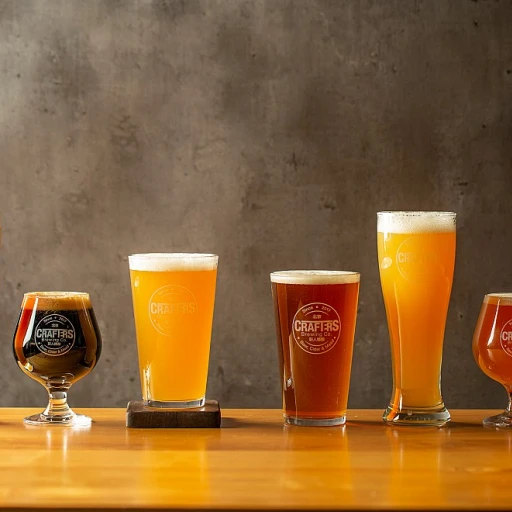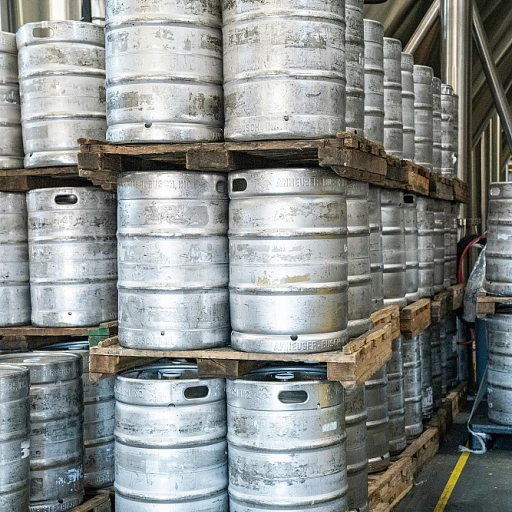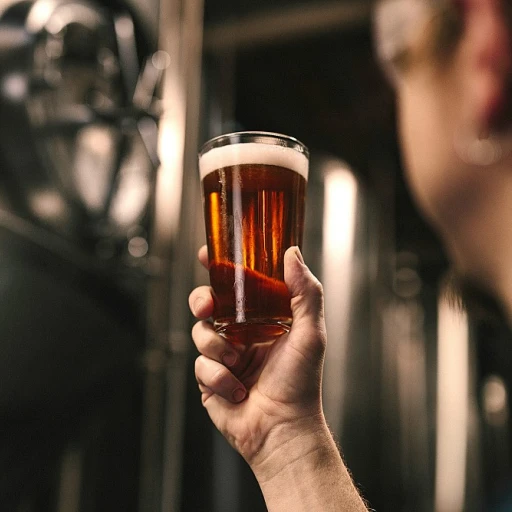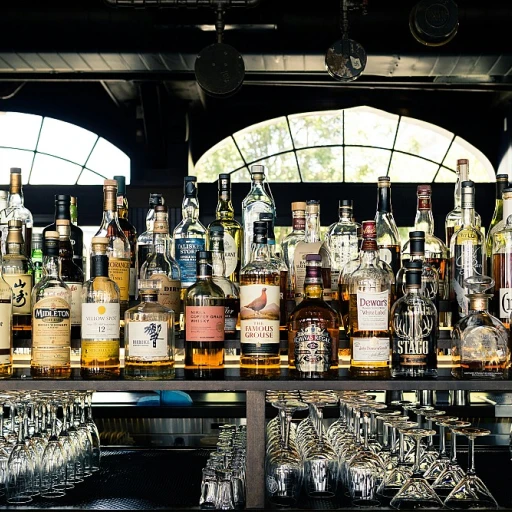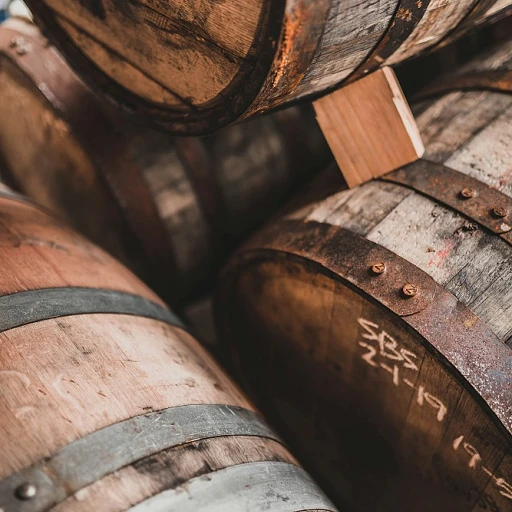What Defines a Dry Beer?
Understanding the Distinct Characteristics of Dry Beer
When delving into the world of dry beer, it's crucial to understand what sets it apart from other beer styles. The term "dry" refers to the lack of residual sweetness in the beer, resulting in a crisp and clean finish. Dry beers often have a higher level of attenuation, which means that the yeast has converted most of the sugars during fermentation, leaving little to no sweetness behind.
One might wonder how this characteristic affects the overall flavor profile. Dry beers often offer a refreshing and light-bodied tasting experience, making them a popular choice for those who enjoy a more subtle and less sweet beer. The absence of residual sugars allows other flavors, such as hops or malt, to take center stage, providing a more straightforward and refreshing taste.
If you're interested in learning more about low-sugar beer styles, you might also be intrigued by
session IPAs, which share a similar light and crisp profile while featuring prominent hop character.
In summary, dry beers are celebrated for their ability to deliver a refreshing drinking experience, with minimal sweetness and clarity in flavor, offering a delightful contrast to other beer styles that often emphasize malt or sweetness.
The Brewing Process Behind Dry Beers
The Fundamentals of a Dry Beer Brew
The secret behind dry beers lies within their brewing process, which primarily emphasizes the conversion of sugars during fermentation. This meticulous process results in a beer that is lower in residual sugars and therefore less sweet. Here's how it unfolds:
- Mash Conversion: During the mashing stage, more of the starches are converted to fermentable sugars. This is achieved by targeting a specific temperature range, usually higher than usual, which activates enzymes that break down starches more efficiently.
- Yeast Selection: Brewers often rely on specific yeast strains that boast a high attenuation rate. These yeasts consume more sugars, leaving very little behind in the final product.
- Extended Fermentation: Allowing the fermentation to go on for longer periods ensures that as many sugars as possible are consumed, contributing to the signature dryness.
This technique not only defines the taste profile of dry beers but also shapes its clean finish. If you're intrigued by how other beer styles compare in terms of brewing, you might find it fascinating to explore
the battle between India Pale Ale vs. Pale Ale to see how different brewing approaches yield diverse flavors and characteristics.
Popular Dry Beer Styles
Popular Styles of Beer with Remarkable Dryness
When discussing the unique qualities of dry beer, certain styles feature a pronounced dryness, offering a pleasing experience for those seeking refreshment and clean finishes.
- American Light Lagers: This style often serves as the poster child for dry beers. With a high level of carbonation and subtle flavor profiles, American Light Lagers are designed to refresh and cleanse the palate, with a crisp final impression.
- Japanese Rice Lagers: Emphasizing a distinct dryness, Japanese Rice Lagers incorporate rice in their brewing process, which contributes to the light body and clear taste. Known for their refreshing qualities, these beers are perfect companions to colorful yet delicately flavored cuisines.
- Brut IPAs: Known for their low residual sugar levels, Brut IPAs represent another segment of dry beers. This style combines the bold hop character typical of IPAs with a champagne-like effervescence and dryness, offering a unique twist for hop enthusiasts.
- Saison: A traditional Belgian style, Saison possesses a dry finish that results from a fermentation process specific to its brewing method. While not as extreme as some Japanese Rice Lagers, the dry quality enhances its complex blend of earthiness and fruitiness.
These styles exemplify the breadth of options available for those seeking dry beer options. From Japanese Rice Lagers to Belgian Saison, each offers a distinct approach to achieving a satisfying dry finish. For more on exceptional beer styles, you might explore the charm of
unfiltered brews that bring different elements to the table, from unique mouthfeels to diverse flavor profiles.
The Role of Hops and Malt in Dry Beers
Unraveling the Balance of Ingredients
When it comes to crafting dry beers, the intricate balance between hops and malt plays a crucial role. Hops are known for their bittering qualities and aromatic contribution to a beer’s profile. In dry beers, hops are carefully selected to enhance the beer's crisp and refreshing character without overpowering it. The bitterness from hops usually lingers less in dry beers compared to richer, malt-heavy styles, allowing the dry finish to shine through.
Meanwhile, malt’s primary function is to provide the fermentable sugars needed in brewing. In dry beers, the malt selection is typically lighter, focusing on achieving a clean flavor that doesn't mask the subtle hop notes or dry finish that defines the style.
Crafting dry beers involves choosing the right combination of low-protein malts and specific hop varieties that contribute dryness to the overall beer experience. This harmonious blend ensures that although the beer is less sweet and bolder in its dryness, it retains a refreshing and balanced taste that beer enthusiasts can enjoy sip after sip. This unique characteristic sets dry beers apart from richer, more robust alternatives, making them ideal for those who appreciate a cleaner, more subtle beer experience.
Tasting and Enjoying Dry Beers
Savoring the Distinct Character of Dry Beers
For those keen on exploring the unique characteristics of dry beers, understanding the tasting experience is crucial. Dry beers, known for their crisp and palate-cleansing traits, offer a refreshing experience that sets them apart from their maltier and more robust counterparts.
When tasting a dry beer, you'll notice its clean finish. This is primarily because the sugars have been fully fermented, resulting in a less sweet, more rounded flavor profile. The absence of residual sugars allows other flavors, such as hops and subtle malt combinations, to shine through without the cloying sensation some other beers might leave on the tongue.
The aroma of a dry beer can range from delicate floral and earthy notes to more pronounced hoppy aromas, depending on the brew's style and ingredients. As you take your first sip, allow the beer to coat your palate and take note of how the flavors evolve from when it first hits your tongue to the crisp, satisfying finish.
Pairing dry beers with food is another delightful adventure. Their refreshing nature makes them an excellent choice for pairing with a variety of dishes. They can complement salty snacks, cut through the richness of creamy dishes, or act as a palate cleanser with more fiery cuisines.
Whether you're enjoying a dry lager, an extra dry stout, or even a specialty dry ale, fully immersing yourself in the tasting experience can heighten your appreciation and deepen your understanding of this distinctive beer style.






